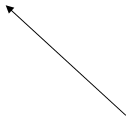Polysemy. Semantic Structure of the Word (SSW)
(11)SSW – not an indissoluble unity, not necessarily stand for one concept;
most words = several concepts = several meanings =>polysemantic words;
polysemy =the ability of words to have >1 meaning
(12) FAQs:
1. Is polysemy an anomaly or a general rule in English vocabulary?
- it is not: most English words are polysemantic.
2. Is polysemy an advantage or a disadvantage so far as the process of communication is concerned?
- well-developed polysemy is a great advantage as it enriches expressive resources of language. The number of sound combinations that human speech organs can produce is limited => at a certain stage of language development the production of new words by morphological means → limited => polysemy → increasingly important in providing the means for enriching the vocabulary
(13)word → polysemantic word
↑ ↑
new meanings → system of meanings ← develops gradually,
↑ ↑ over the centuries
just added to old ones oust some of old ones
general tendency - to increase the total number of meanings & to provide for a quantitative and qualitative growth of the language's expressive resources.

(14)analysis of SSW ← 2 levels:
 1 level: SSW = system of meanings: Fire, n.
1 level: SSW = system of meanings: Fire, n.
(only the most frequent meanings are given)
 I
I 

 Flame
Flame
(= main meaning;centerof SSW; general; dominance over other meanings)

 II III IV V
II III IV V

 An instance Burning material The shooting Strong feeling,
An instance Burning material The shooting Strong feeling,
of destructive in a stove, fireplace, of guns, etc.; passion,
burning; etc.; e.g.: There is e.g.: to open enthusiasm;
e.g.: a forest fire a fire in the next (cease) a fire e.g.: a speech
room. A camp fire. lacking fire.
Secondary meanings
associated with special circumstances, aspects & instances & with one another, IV & V - exclusively through meaning I
(15)Bar, n
 II III
II III

 The profession of barrister, lawyer; → (In a public house or hotel)
The profession of barrister, lawyer; → (In a public house or hotel)
e.g.:go to the Bar; read for the Bar. ← A counter or a room where drinks are
 served; e.g.:
served; e.g.:
They went to the bar for a drink.
 traditional barrier dividing a court-room
traditional barrier dividing a court-room
into 2 parts counter = kind of barrier b/w
customers& barman
 I
I
Any kind of barrier to prevent people from passing.
(16)a centre can be found not in every polysemantic word → different principle of SSW arrangement:
Dull, adj.

 I. Uninteresting, monotonous, boring;
I. Uninteresting, monotonous, boring;
e. g. a dullbook, a dull film.
II. Slow in understanding, stupid;
implication e. g. a dull student. There is no
of deficiency, III. Not clear or bright; generalised meaning
insufficient e. g. dull weather, a dull day, a dull colour. covering& holding
quality, IV. Not loud or distinct; together the rest
something e. g. a dull sound. of the SSW
lacking V. Not sharp; e. g. a dull knife.
VI. Not active; e. g. Trade is dull.
VII. Seeing badly; e. g. dull eyes (arch.).
VIII. Hearing badly; e. g. dull ears (arch.)
▼
Dull, adj.
I. Uninteresting → deficient in interest or excitement.
II. ...Stupid → deficient in intellect.
III. Not bright → deficient in light or colour.
IV. Not loud →deficient in sound.
V. Not sharp → deficient in sharpness.
VI. Not active → deficient in activity.
VII. Seeing badly →deficient in eyesight.
VIII. Hearing badly →deficient in hearing.
=>centre holding together the complex SSW - not 1 of the meanings but a certain componentsingled out within each separate meaning
(17)
2 level: SSW=“divisible” at the level of different meanings & at a deeper level
↑
Each = subject to structural analysis,
represented as sets of semantic components.
=>componential analysis -one of the modern methods of semantic research, meaning = a set of elements of meaning which are not part of the vocabulary of the language itself, but rather theoretical elements, postulated in order to describe the semantic relations b/w the lexical elements of a language.
(18) The scheme of SSW dull → SSW ≠ a mere system of meanings; each separate meaning = subject to further subdivision & possesses an inner structure of its own => SSW should be investigated:
a) at the level of different meanings,
b) at the level of semantic components within each separate meaning.
For a monosemantic word (= with one meaning) – only b).
